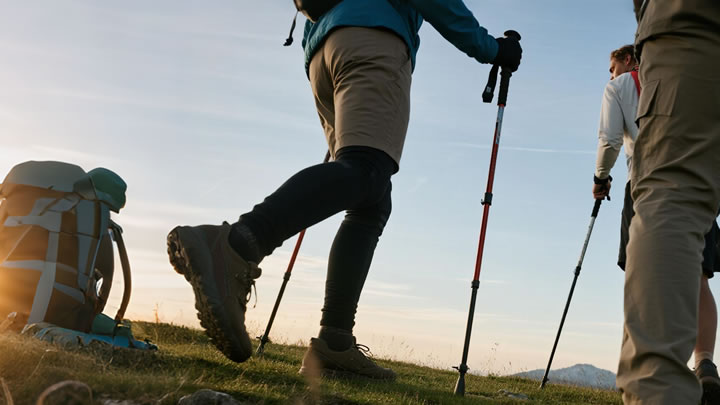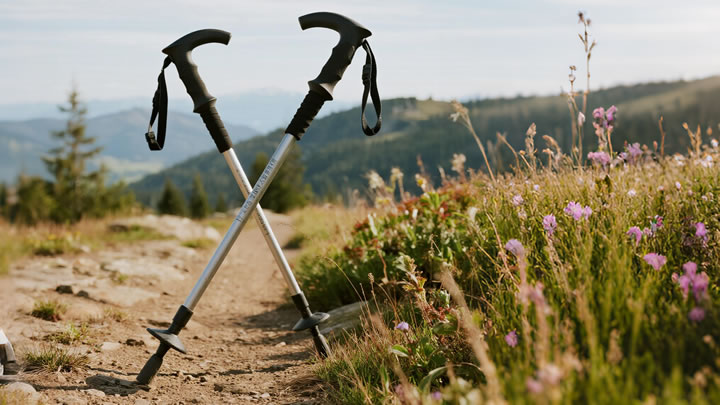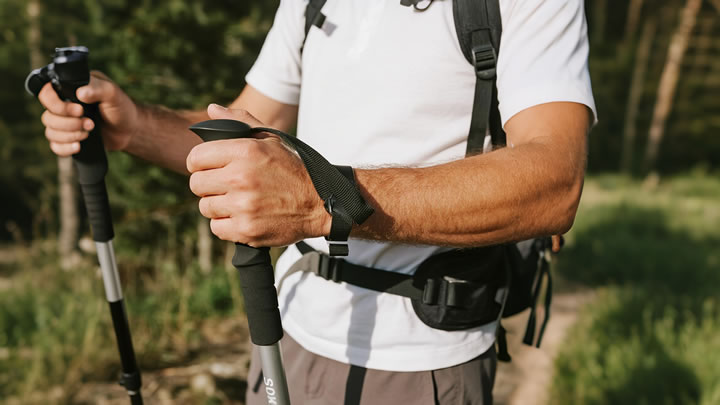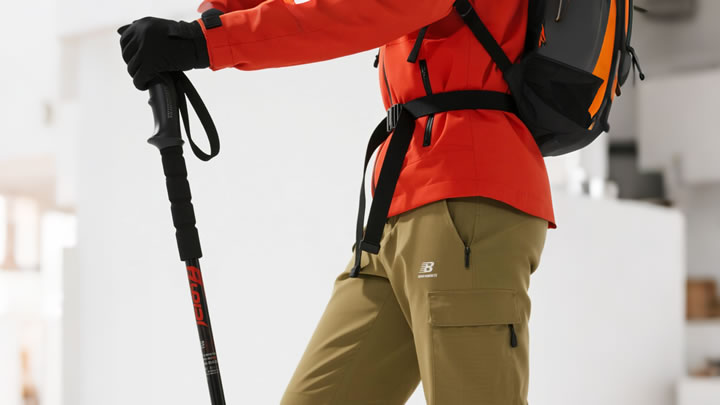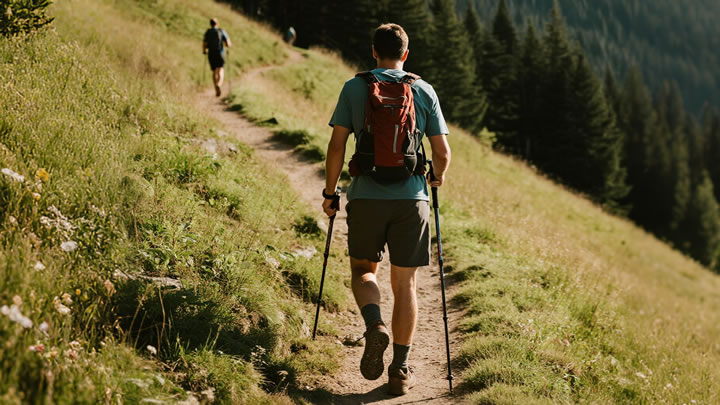Best trekking poles for heavy backpack loads?
When carrying heavy backpacks, trekking poles become critical tools for distributing weight, reducing joint strain, and maintaining balance. The best options for heavy loads prioritize durability, load - bearing capacity, and stability over extreme lightweight design.
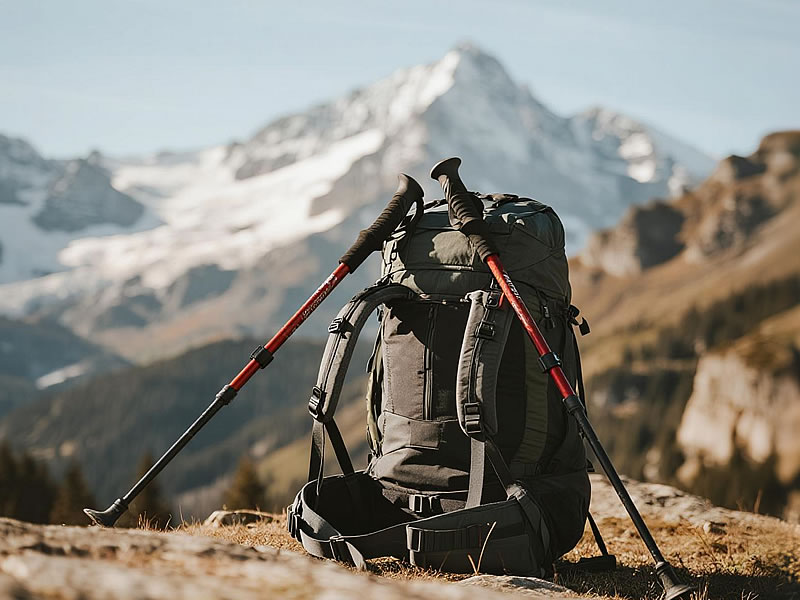
Key Features to Prioritize
For heavy backpacks, the pole’s construction is non - negotiable. Aluminum alloys (such as 7075 - T6) are preferred over carbon fiber because they offer superior impact resistance and flexibility under pressure. Carbon fiber, while lighter, can crack or snap when subjected to the extra force from a heavy load, especially on rocky terrain.
A thicker shaft diameter (18mm or larger) enhances rigidity. Poles with 3 - section designs often provide better stability than 2 - section models, as they allow for finer length adjustments to adapt to uneven ground—a must when balancing a heavy pack.
Locking mechanisms must be robust. External lever locks (like those from Black Diamond) are more reliable than twist locks for heavy loads, as they maintain tension even with repeated use and can withstand the added torque from a weighted backpack.
Top Picks for Heavy Backpack Loads
Black Diamond Trail Ergo Cork Trekking Poles
These poles are a favorite among thru - hikers with heavy packs. Built with 7075 aluminum shafts, they balance strength and weight (11.6 oz per pole). The ergonomic cork grip reduces hand fatigue during long days, while the FlickLock Pro lever system ensures secure length adjustments. The carbide tips bite into various surfaces, providing traction when every step counts.
Leki Micro Vario Carbon Trekking Poles
Though carbon fiber, Leki’s Micro Vario poles use a reinforced carbon blend designed for durability. They feature the Speed Lock 2 system, which is both quick to adjust and strong enough to handle heavy loads. The Aergon grip with a strap that wraps around the wrist distributes pressure evenly, reducing strain when leaning into the poles for support.
MSR DynaLock Ascent Trekking Poles
MSR’s DynaLock poles are engineered for rugged use. Their 7000 - series aluminum shafts can withstand high impact, and the DynaLock twist mechanism uses a cam - action design to stay locked under heavy loads—no slipping mid - hike. At 12.4 oz per pole, they are slightly heavier but offer unmatched reliability for backpackers carrying 50 + pound packs.
Komperdell Carbon C3 Trekking Poles
For those seeking a middle ground between strength and weight, Komperdell’s Carbon C3 poles combine carbon and fiberglass for a sturdy yet manageable build (10.6 oz per pole). The Power Lock 2 lever system is easy to operate with gloves on and maintains tension even with repeated adjustments. The extended foam grip allows for multiple hand positions, useful when shifting weight to relieve fatigue.
Cascade Mountain Tech Aluminum Trekking Poles
Budget - friendly but tough, these aluminum poles (13.4 oz per pole) feature a 18mm shaft diameter and external lever locks. They are designed to handle heavy loads without bending, making them ideal for beginners or casual hikers with large backpacks. The rubber tips can be replaced with carbide for more challenging terrain.
Additional Considerations
- Grip and strap design: Padded, ergonomic grips with wrist straps that distribute pressure help prevent blisters and hand fatigue. Look for straps that are adjustable and moisture - wicking, as sweaty hands can slip when exerting force.
- Tip options: Carbide tips are standard for most terrains, but adding rubber or snow baskets can enhance versatility, especially if hiking through mud, snow, or soft ground with a heavy pack.
- Weight capacity: While most poles don’t list a specific weight limit, aluminum models with thicker shafts and reinforced locks can comfortably support hikers plus packs weighing 300 + pounds, whereas carbon poles are better suited for lighter loads (under 250 pounds total).
- Why These Poles Stand Out
- Heavy backpacks amplify every weakness in a trekking pole—flimsy locks fail, thin shafts bend, and weak materials break. The poles listed above are tested in real - world conditions, from steep ascents to rocky descents, proving their ability to bear extra weight without compromising performance. They may weigh a few ounces more than ultralight options, but that trade - off ensures safety and durability when carrying heavy loads.
- In summary, the best trekking poles for heavy backpacks prioritize aluminum construction, robust locking mechanisms, and stable designs. Whether you’re tackling a multi - day expedition with a fully loaded pack or navigating challenging terrain with gear, these poles will reduce strain, improve balance, and stand up to the pressure.

